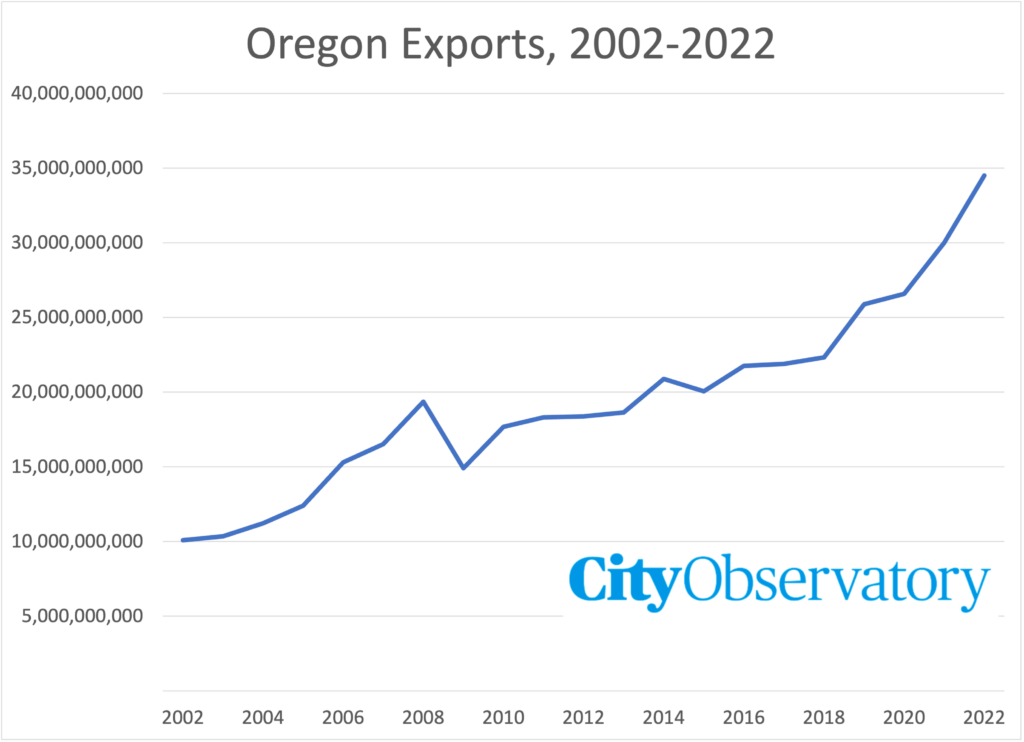Portland’s $30 Million Container Shipping Folly
Cargo cults are a well-documented sociological phenomenon: Cargo cults were religious movements that emerged among indigenous people in Melanesia during the early to mid-20th century. The cults were inspired by the arrival of European colonizers and the material goods they brought. The islanders observed the seemingly magical ability of outsiders to receive vast amounts of supplies and desired objects. The natives didn’t understand the complex economic systems behind these goods and believed they were supernatural gifts. To emulate the magic of the outsiders, the natives performed rituals and practices aimed at appeasing spirits to obtain this “cargo” for themselves often mimicking the trappings of the colonizers, like building crude imitation docks, landing strips or radio towers. Very much in that vein, Oregon leaders are proposing to prop up a similar cargo cult edifice, in the from of Portland’s failing container terminal.
Oregon policymakers are poised to pour $30 million per year of taxpayer money into a decades-old pipe dream: reviving container shipping service at the Port of Portland. Governor Tina Kotek has asked the legislature to subsidize this nostalgic cargo cult plan under the mistaken belief it will bolster the state’s economy. This is perhaps the most vexing example we’ve seen of policymakers chasing the symbolic images and physical artifacts of a bygone era rather than understanding the real economic forces driving growth and prosperity today.
An honest look at the economics of the container trade tells us this effort is doomed to failure—and irrelevant to our economic future. Even at its heyday, Portland was never more than a bit player in the containerized shipping game, handling under 2 percent of West Coast traffic. Most container shippers already abandoned the Port of Portland’s container facilities once, from 2015 through early 2020. And what happened next? Oregon’s economy not only survived — it thrived, boasting record economic growth, exports and prosperity during the multi-year period sans local container service. Job opportunities kept expanding as countless innovative companies launched or relocated here, drawn by the talented workforce pipeline and entrepreneurial vision. The growth of Oregon exports accelerated after the end of container service in Portland in 2015, with total exports growing from $20 billion annually to more than $34 billion in 2022. Lack of container service was no brake on growth because the vast majority of this output was high value products like electronics, with negligible transportation costs.
The naïve assumption that goods transportation is essential for urban economic success has been thoroughly debunked by economists like Ed Glaeser and development patterns nationwide. Glaeser wrote:
. . . over the twentieth century, the costs of moving these goods have declined by over 90% in real terms, and there is little reason to doubt that this decline will continue. Moreover, technological change has eliminated the importance of fixed infrastructure transport (rail and water) that played a critical role in creating natural urban centres . . . These reduced costs, and the declining importance of the good-producing sector of the economy, means that in our view, it is better to assume that moving goods is essentially costless than to assume that moving goods is an important component of the production process.
Thriving cities like Denver, Austin, Nashville and Minneapolis clearly demonstrate you don’t need container cranes in your skyline to cultivate a world-class, globally-connected regional economy in the modern era. Production has long since decoupled from high shipping costs, and save for a handful of load center ports like Los Angeles, container shipping is a money losing business — lessons Portland’s cargo cultists stubbornly refuse to learn.
Even the temporary blip of container services resuming in Portland during COVID-19’s supply chain chaos failed to generate positive returns, underscoring how thoroughly uncompetitive its port infrastructure and economics have become. The Port of Portland reports losing $14 million last year alone on its container operations. The industry is rapidly consolidating into mega-vessel, networks that can only call at a small number of deep-water ports like Los Angeles/Long Beach, leaving decreasingly tiny opportunities for smaller players.
The romanticized imagery of containers may have been an apt avatar for the globalized physical economy of the 20th century. But today those iconic boxes are merely symbols of an economic paradigm that Portland and most other successful metro areas have already outgrown. Futilely throwing $30 million per year at this nostalgic cargo cult is simply flushing taxpayer money down the drain.

If state leaders actually want to cultivate a robust economic future for Oregon, they need to focus on the real drivers of modern prosperity: human capital, amenities to attract talent, innovation ecosystems, and entrepreneurial environments. Not outdated boxes on a boat. Stop chasing the hollow symbols of the past and start capitalizing on Portland’s 21st century strengths. Our economy has clearly moved on — it’s time for policymakers to do the same.


